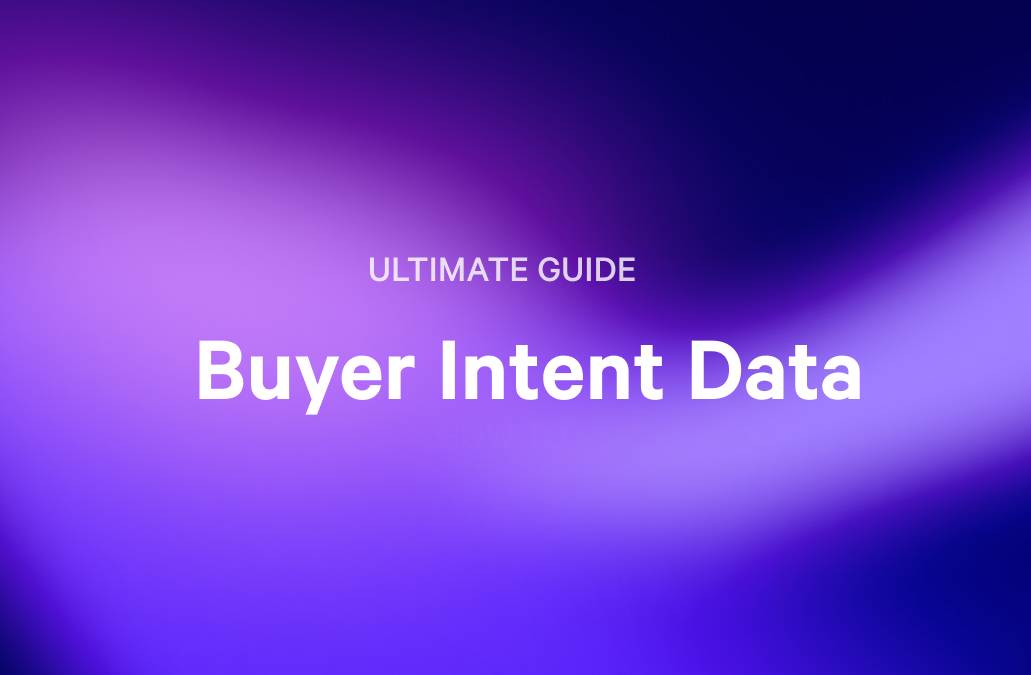With continuing economic uncertainty, buyer engagement is set to be an arduous task as we head through 2024. Yet, we’ve been here before (2009, anyone?!), and the world is still turning, customers still have problems to solve, and sales targets must still be met.
The difference this time is that sellers are more adapted to virtual selling, driven by the global pandemic and a resulting shift in buyer behavior, which is no doubt here to stay. Despite the debate over workforce productivity, modern organizations and their employees continue to reap the benefits of flexible working practices that equate to less face time with sellers.
According to Gartner, B2B virtual sales interactions will continue to rise over the next five years. We do not doubt that as Millenials and Gen Z move into decision-maker roles, the appetite for a confident and efficient B2B digital buying experience will only make the virtual sales trend even more prolific, fueled by seamless B2C experiences that have become the norm since most of our lives are online.
Couple this modern way of selling with the inevitable objections triggered by the possibility of another global recession, and it’s fair to say that the vast majority of sellers will find the rest of 2024 continually challenging when it comes to buyer engagement.
Key Takeaways
- Like sellers, buyers have challenges proving the value or ROI of their purchases
- Buyer engagement refers to all interactions your buyer has with your company during the sales process.
- You can track your buyer engagements to better understand what is working and what is not
- Beware of vanity metrics that look powerful but don't move the needle
- You can leverage technology to improve your buyer engagement abilities and make data-driven decisions about ways to improve your sales process and conversion rates.
Buyer challenges
Buyers currently have a lot to contend with. Every business worldwide will grapple with improving competitiveness and productivity and generally doing more with less, as we each manage the risks associated with a global recession (whether it happens or not). Budgets will be cut, and priorities will change….but problems will still need solutions.
To drive projects forward, buyers will want and need to be confident that their purchasing decisions meet the expectations of the buying committee and ultimately deliver value to their businesses. They’ll be meticulous about their research before shortlisting prospective solutions and will expect sellers to partner with them to achieve their goals rather than making a quick sale.
Successful sellers must realize the importance of the buyer experience by investing time and effort to meet their needs and expectations.
38% of sellers have closed deals over $500K without ever meeting the buyer face to face.
LinkedIn, Global State of Sales Report, 2022
What is buyer engagement?
Buyer engagement is all of the interactions a buyer has with the company over the course of their journey to becoming a customer. It's about much more than just catching their eye; it’s about capturing their interest and keeping them involved at every step of their journey—from the first touchpoint to the final decision, even when you can't meet face to face.
By nurturing buyer relationships, you create a pathway that not only leads to a sale but also builds a foundation for potential future business. It’s a strategic, dynamic process that requires understanding, good timing, and, most importantly, genuine connection.
Differences between buyer engagement and customer engagement
Buyer and customer engagement are terms that are used interchangeably in many sales organizations, but they're not one and the same. Though they sound similar, the distinctions are crucial for tailoring your strategies effectively.
Buyer engagement
This focuses on potential customers—those still deciding whether to purchase your product or service. The engagement here is about attracting, nurturing, and converting leads. It's like the courtship phase in a relationship, where you’re trying to impress, captivate, and ultimately persuade the buyer that you're the right match for their needs.
Customer engagement
This term comes into play once the deal is sealed. It’s about deepening the relationship with individuals who have already purchased from you. Think of it as the marriage phase, where you must keep the spark alive.
While buyer engagement is about generating interest and closing deals, customer engagement focuses on retention and satisfaction. Both are integral to a thriving business, but your strategies will differ depending on which stage of the relationship you’re addressing. For sales leaders, understanding these nuances is key to deploying the right tactics at the right time. It’s about knowing whether to woo or to nurture.
Why tracking buyer engagement is key in sales
Why obsess over tracking buyer engagement? Simple: it's a game-changer for sales success. When you measure how well you engage potential buyers, you gain powerful insights that can dramatically shift your sales strategies—for the better.
Consider this: without an engagement gauge, you're flying blind. You throw out messages and hope they stick without really knowing if they do or why. But when you start tracking interactions, suddenly, you see patterns. You understand what grabs attention, what keeps prospects interested, and, crucially, what turns them off. From there, you double down on what works and pull back on what doesn’t.
Pinpoint your most engaging content
When you track buyer engagement, you can pinpoint exactly what types of content—blogs, videos, webinars, or case studies—capture the most interest and keep potential buyers returning for more.
From there, you can focus on producing more of what works and refining your approach to maximize engagement.
Enhance personalization efforts
When you know what is working, you can tailor your interactions to match each prospect's specific needs and interests. This kind of personalized approach is like crafting a bespoke suit—every detail is made to fit perfectly, making the wearer (or in this case, the buyer) feel uniquely valued.
When you know which emails they open, which links they click, and which products they linger on, you're equipped with the insights needed to create messages that resonate deeply. This isn’t about bombarding them with generic sales pitches; it’s about having meaningful conversations that address their unique challenges and aspirations, ensuring every interaction adds value, builds trust, and moves the buyer closer to a decision.
Accelerate sales cycles
Tracking buyer engagement provides crucial insights that can significantly accelerate your sales cycles. By understanding where each prospect is in their buying journey and how they interact with your content and communications, you can move faster from initial contact to closing the deal.
Consider a relay race: each runner knows precisely when to start running to take the baton from their teammate seamlessly. Similarly, by tracking engagement, your sales team can perfectly time their interactions—knowing when to provide more information, when to offer a demo, or when to discuss pricing. This eliminates unnecessary delays and ensures that prospects are not left waiting at crucial moments, which can often lead to a loss of interest or a feeling of being overlooked.
Moreover, this insight allows you to identify and focus on high-intent buyers—those who are more engaged and, thus, more likely to make a purchase decision quickly.
Boost team efficiency and effectiveness
By clearly grasping where each prospect stands in the engagement spectrum, your team can allocate its time and resources more strategically. When you understand which prospects are most engaged, your sales team can focus its efforts on those most likely to convert, thereby maximizing its impact and not wasting time on long shots.
This targeted approach not only improves individual performance but also enhances team synergy. Each team member can specialize in different stages of the buyer's journey or different types of interactions, playing to their strengths and closing more deals.
KPIs & metrics to track buyer engagement
To truly master buyer engagement, you need to measure it meticulously. But what exactly should you be looking at?
Conversion rate
The conversion rate is a pivotal KPI that quantifies the percentage of prospects who move from one stage of the engagement process to the next, ultimately leading to a sale. It's a direct indicator of how effectively your engagement strategies are resonating with potential buyers.
Think of it as a litmus test for your sales funnel's health. High conversion rates mean your messages hit the mark, compelling prospects to act. Conversely, low rates might signal a need for strategy adjustments—perhaps your calls to action need refining, or your content needs to be more relevant to your audience (or you have the wrong audience).
Lead response time
Lead response time measures how quickly your team engages with a potential buyer after they express interest. This KPI is vital because speed in communication can dramatically influence a prospect's decision-making process.
Think of it as a first impression in a fast-moving conversation. A prompt reply signals attentiveness and respect for the prospect's time, potentially tipping the scales in your favor. By reducing response times, you not only show efficiency but also build trust, significantly boosting your chances of progressing the sale.
To improve this metric, streamline your response mechanisms. Quick, personalized follow-ups can drastically enhance buyer perception and increase engagement, pushing leads closer to conversion.
Email open and click-through rates
Email marketing remains a cornerstone of buyer engagement, making open and click-through rates key metrics to monitor. These rates measure how well your emails are performing—whether they're enticing enough to open and engaging enough to prompt a click.
View these metrics as the pulse of your email campaigns. High open rates indicate your subject lines connect with recipients, while high click-through rates suggest your content is compelling and relevant, prompting further interaction.
To boost these numbers, test various subject lines and content formats. Personalization, compelling calls to action, and relevant, value-packed content are critical strategies for improving engagement and driving these rates up.
Website and social media interactions
Website and social media interactions, including page views, clicks, likes, comments, and shares, serve as a barometer for how your content resonates with your audience. These metrics are invaluable for gauging the impact of your digital strategies on buyer engagement.
Think of social media as a lively conversation at a networking event. High interaction rates mean your topics are engaging and your voice is being heard. It’s crucial for understanding what content fuels conversation and builds relationships with your prospects.
To enhance these interactions, create content that sparks curiosity and invites conversation. Use engaging visuals, pose questions, and encourage user participation to boost engagement and make your social media channels a hub for discussion and connection.
Use Qwilr to measure buyer engagement
Now that you know the importance of buyer engagement, why not harness the power of Qwilr’s proposal software to elevate yours? Create engaging proposals quickly and easily, then use our analytics to track how your prospects interact with them.
Who’s looking, when, and for how long?
A crucial, game-changing insight into buyer intent that will streamline and transform your sales process.
Final Thoughts
Effective buyer engagement plays a pivotal role in converting prospects into loyal customers while accelerating your sales cycles and boosting your efficiency. The journey to master it may be complex, but the rewards more than justify the effort.
Looking to enhance yours? Qwilr helps streamline your process and tailor your engagement more precisely. Try it today and see the difference it can make.
About the author

Marissa Taffer|Founder & President of M. Taffer Consulting
Marissa Taffer is the Founder & President of M. Taffer Consulting. She brings over 15 years of sales and marketing experience across various industries to a broad range of clients.
FAQs
Start by understanding your audience deeply—know their needs, preferences, and pain points. Use tools like Qwilr to create personalized, engaging content and proposals. Regularly analyze engagement metrics to refine your approach, and always be ready to adapt to feedback and changing market conditions.
Absolutely! Buyer engagement strategies should be tailored to the specific context of your industry. What works in a B2B setting—such as detailed whitepapers and industry-specific case studies—is unlikely to be as effective in a B2C context, where quicker, more visually engaging content is usually more appropriate. Understanding the nuances of your industry’s sales cycle and buyer behavior is key to crafting effective engagement strategies.


